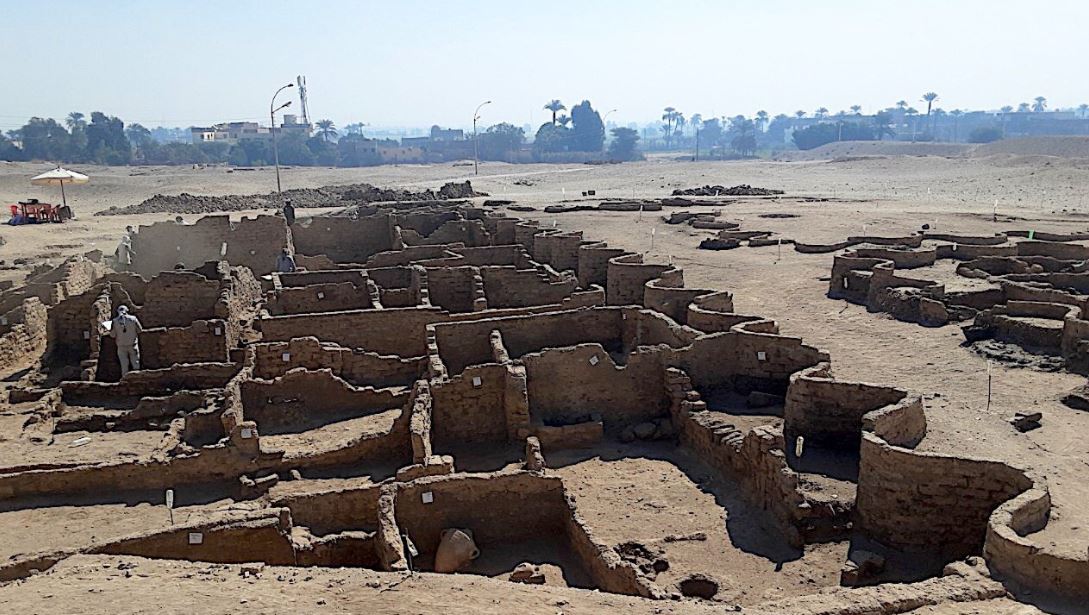Archaeologists have unearthed the remains of an ancient city dating back 3,000 years, which they describe as the “largest” ever found in Egypt. Renowned Egyptologist Zahi Hawass announced the discovery of the “lost golden city” located near Luxor, home of the legendary Valley of the Kings.
In a statement released on Thursday, the excavation team said the city “was lost under the sands and dates to the reign of Amenhotep III and continued to be used by Tutankhamun and Ay.”
Biggest discovery since Tutankhamun’s tomb
Betsy Bryan, professor of Egyptian art and archaeology at Johns Hopkins University, described the find as the “second most important archeological discovery since the tomb of Tutankhamun” nearly a century ago.
Excavations began in September 2020 between the temples of Ramses III and Amenhotep III near Luxor, some 500 kilometres (300 miles) south of Cairo. Within weeks, the team discovered mud-brick formations that ran in all directions.
After seven months of excavations, several neighborhoods have been uncovered, including a bakery complete with ovens and storage pottery, as well as administrative and residential districts.
‘Golden age of the pharoahs’
Items of jewelry have also been unearthed, along with colored pottery vessels, scarab beetle amulets and mud bricks bearing Amenhotep III’s seals.
Zahi Hawass Unearthed the Lost City of “Aten” https://t.co/io30h4CbDb #Egypt #Archaeology #Egyptology more exclusive footage to be posted later @indyfromspace @yukinegy pic.twitter.com/gxbwBigxiu
— Luxor Times (@luxortimes) April 8, 2021
feature image courtesy of Luxor Times Twitter feed
more at dw.com
also read
The Most Common Types of Cyber Crime (infographic)
Ask me anything
Explore related questions





